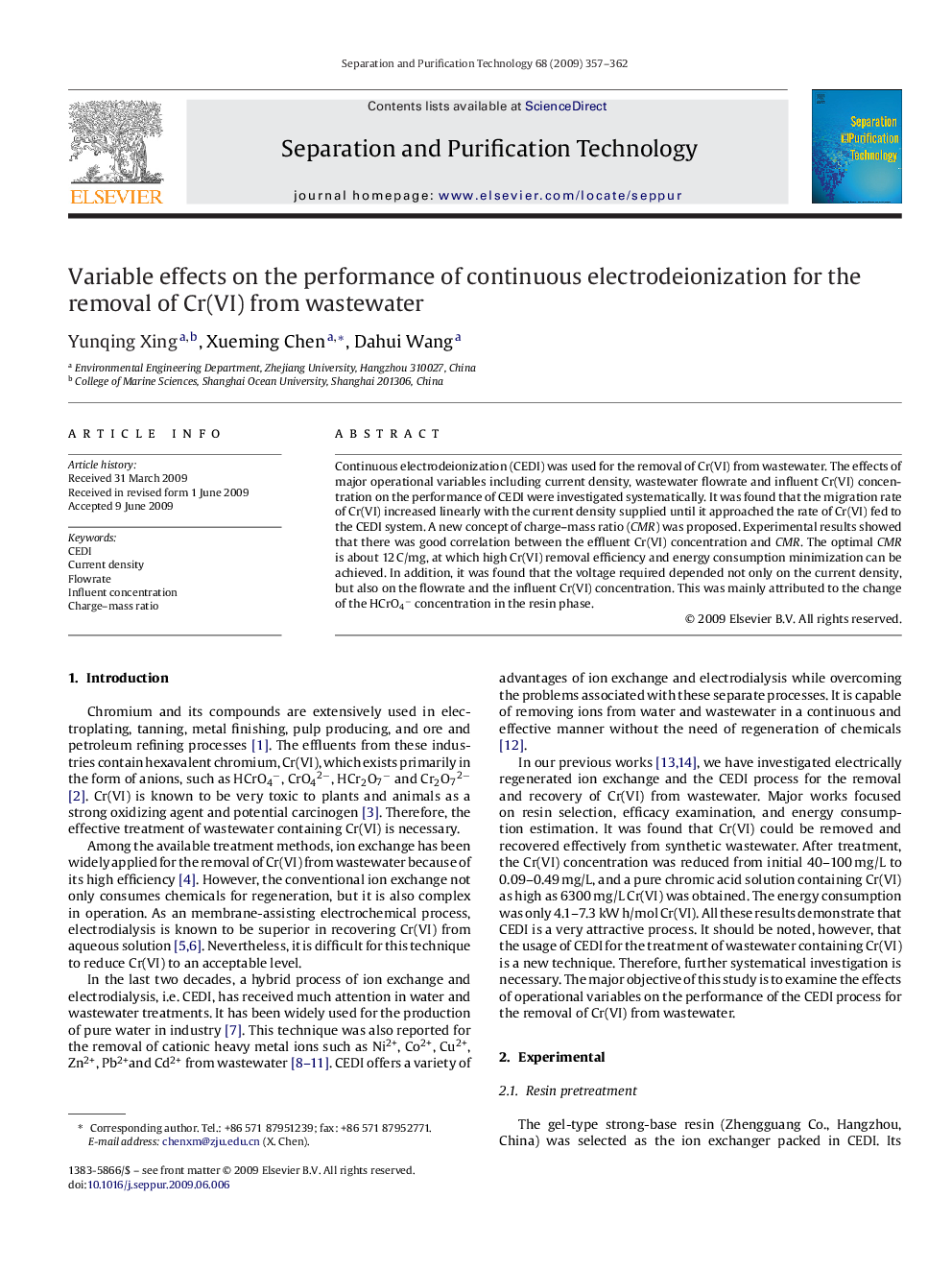| Article ID | Journal | Published Year | Pages | File Type |
|---|---|---|---|---|
| 643272 | Separation and Purification Technology | 2009 | 6 Pages |
Continuous electrodeionization (CEDI) was used for the removal of Cr(VI) from wastewater. The effects of major operational variables including current density, wastewater flowrate and influent Cr(VI) concentration on the performance of CEDI were investigated systematically. It was found that the migration rate of Cr(VI) increased linearly with the current density supplied until it approached the rate of Cr(VI) fed to the CEDI system. A new concept of charge–mass ratio (CMR) was proposed. Experimental results showed that there was good correlation between the effluent Cr(VI) concentration and CMR. The optimal CMR is about 12 C/mg, at which high Cr(VI) removal efficiency and energy consumption minimization can be achieved. In addition, it was found that the voltage required depended not only on the current density, but also on the flowrate and the influent Cr(VI) concentration. This was mainly attributed to the change of the HCrO4− concentration in the resin phase.
